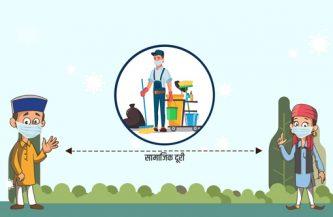Wastewater recycling by urban resident’s silver bullet or juvenile thinking

Last summer, severe water shortage gripped cities across India, especially Delhi, and heat waves intensified the crisis. As shocking visuals of the crisis dominated media headlines, the blame was swiftly put on climate change and global warming, fuelling a narrative that overlooked deeper, systemic problems. The real story however lies not in sensational headlines but in the harsh realities of our flawed water governance, where seasonal challenges are met with reactive, short-sighted solutions rather than meaningful, sustainable reform.
Be it Delhi’s water crisis or Bangalore’s water scarcity, they have nothing to do with climate change or heat waves. While naturally the thirst for water goes up in summer when there is a heat wave like situation, it cannot spike to levels causing an urban water crisis. Municipal water demand is not like irrigation demand that it can abruptly go up with a change in few weather parameters!
Climate change cannot dry up streams and rivers overnight. Its impact on hydrology is supposed to be gradual, taking 25-30 years to see the impacts. What we are witnessing instead is the impact of climate variability—a phenomenon that alters hydrological systems. So far as Delhi is concerned, river flow variations caused by annual rain and snowfall changes, along with shifts in groundwater due to the previous monsoon, play a key role.
When it comes to proposed solutions, they often lack a clear understanding of the problem. In this case, the proposed remedy of wastewater treatment and reuse excites almost everyone — presenting itself as a simple solution for a complex problem. It is also populist because the burden of finding additional resources to invest on treatment plants is not on the people who are going to be the direct beneficiaries of this measure, but on utility with the ultimate burden falling on ordinary taxpayers.
Poor Feasibility and Viability
However, let us examine the viability of wastewater treatment and recycling as a solution. To begin with, treating wastewater to a potable level is far from free, and requires tertiary treatment and final polishing. The real hidden cost lies in transporting the sewage and effluents to the treatment plants and then taking the treated water back to the original supply sources from which the water is pumped into the distribution network. The costs can range anywhere between Rs. 50-60 per m3.
It would be viable under two scenarios. Scenario 1: when the consumers are willing to pay the full cost of supplying the treated wastewater. Scenario 2: the Delhi Jal Board (DJB) pays UP, HP, and Haryana for raw water at rates exceeding the cost of sewage transport, treatment, and reintegration. The first scenario is unlikely, as most urban consumers (using under 20 m³ per month) receive water nearly free. In the second scenario, DJB is to pay Rs. 6 per m³ to the HP government under an agreement still awaiting implementation.
There is no water management when users do not recognize the scarcity value of the resource. While the utility invests in wastewater treatment, users often resort to illegal tapping of water, to use it for gardening, car washing, etc. Raids cannot fix this problem, as the government’s policy of ‘free water’ has already unleashed the Frankenstein Monster.
In all wastewater recycling cases, the users pay for services. The price typically includes the resource cost, resource degradation cost, and the infrastructure cost. Many cities use an incremental block tariff—higher consumption leads to higher charges per unit. So, when people pay for every unit of water they use, the consumption automatically reduces. As a result, wastewater generation also reduces, thereby reducing the investments for treating. This has happened in many European cities wherein the per capita residential water use had reduced significantly over time.
Treating wastewater to a certain standard for an industrial cluster is feasible. However, that will not be the case with most residential areas and small commercial establishments. It is juvenile to think of each residential society having its own wastewater treatment plant. Operating such a plant is far more complex than running a mini water supply system from a bore well, especially when the water is unsafe for drinking.
Wrong Example
Often Singapore is cited as an example for wastewater recycling. There, the citizens pay a very high price for water (S $ 2.74 to 3.69/m3, equivalent to Rs 68.0-Rs. 92.0/m3 in India) and they feel that the water is too good. So, the Public Utility Board makes sufficient revenues to investment in treatment technologies that produce the best quality water.
While the treated wastewater can meet 40% of Singapore’s needs, it comes with a huge cost. The Deep Tunnel Sewerage System being built is expected to cost around $10 billion (for a population of 5.6 million people). It is just a matter of speculation as to how much it would cost to the taxpayers if similar projects were implemented in India.
More importantly, Singapore has to rely on buying raw water from Malaysia as it has too little internal renewable water. It therefore faces unique challenges that India, with its vast rivers, lakes, and groundwater reserves, does not— provided these are managed efficiently. Singapore’s government knows the value of water, by virtue of the unique situation it is in. In India, the municipalities and urban water utilities often extract water from distant reservoirs without paying for it. Even in a city like Delhi, water bills rarely cover the basic operation and maintenance costs of the system.
Conclusions
The philosophy behind wastewater treatment is attaching a certain value to the water that we take from nature, and to the ecosystem, be it economic, social or environmental. If so, we first need to start charging for water based on its value. Let everyone pay the same rate, with cash assistance for those unable to afford it. While setting up treatment plants is a start, without sufficient resources—both qualified manpower and funding—they will quickly fall into disuse. What is needed is the political will of the urban local bodies to raise the water tariff so that enough funds can be generated to finance the upgradation of the existing wastewater treatment systems for obtaining water of potable standards.
Author: Mr Dinesh Kumar





